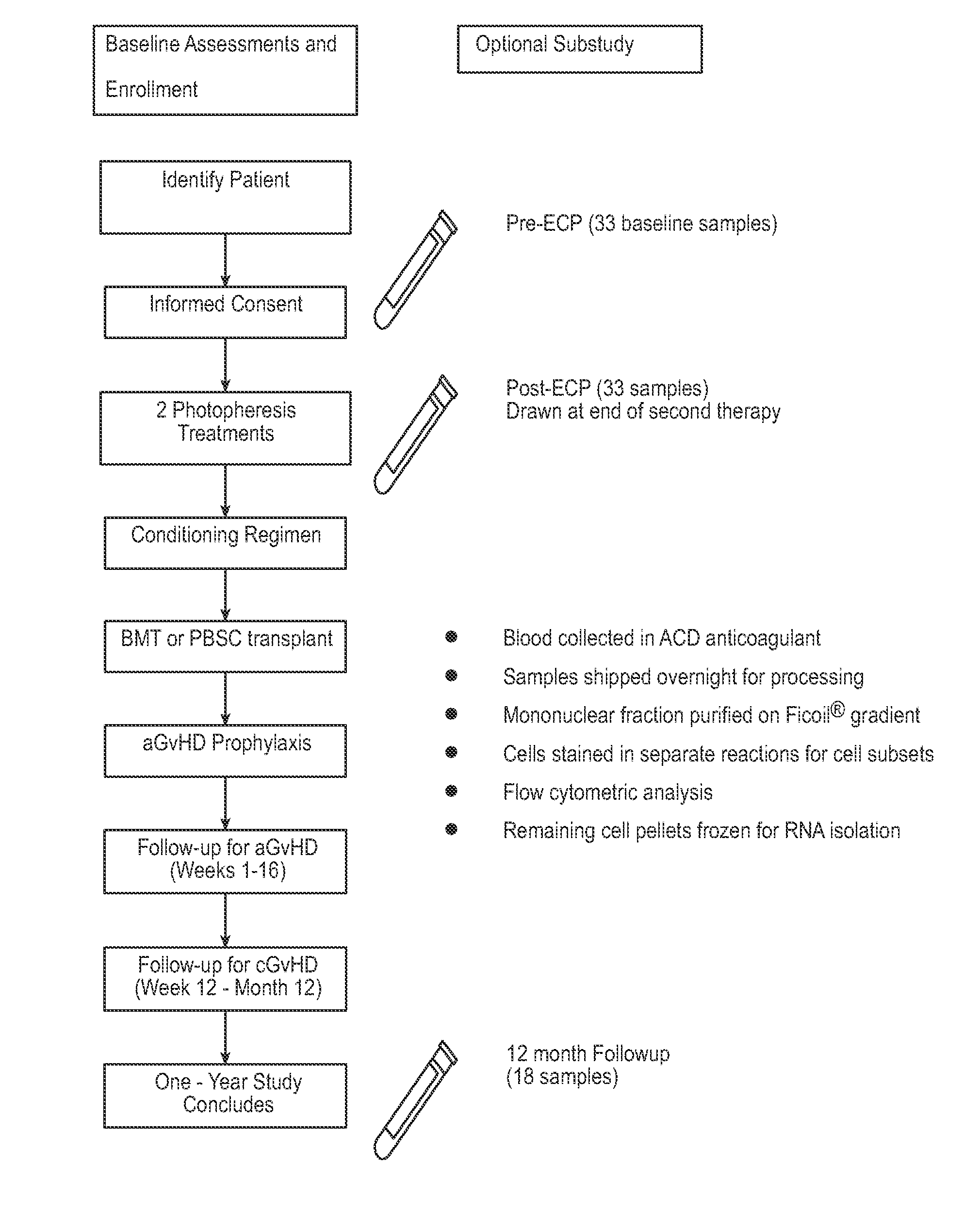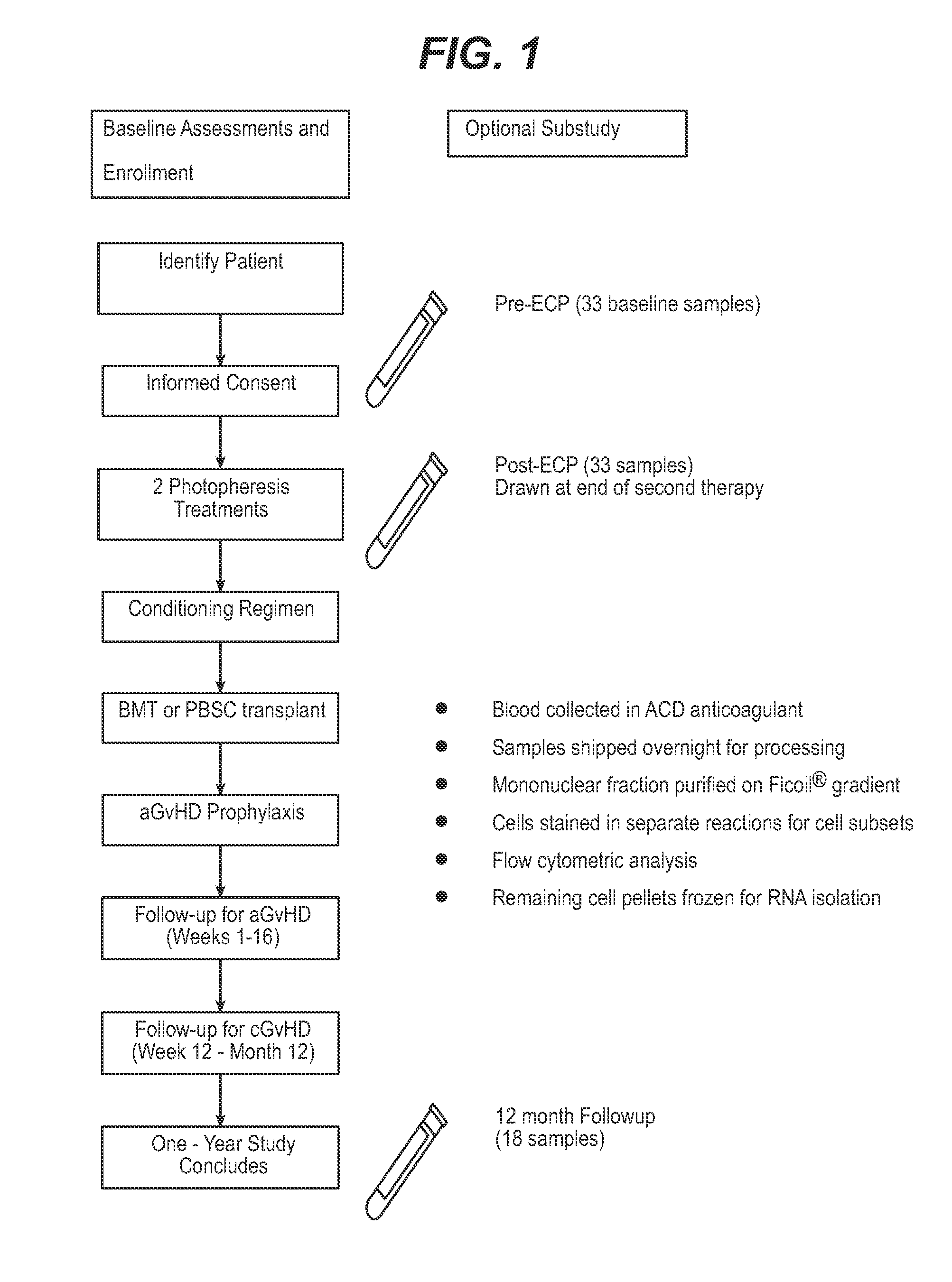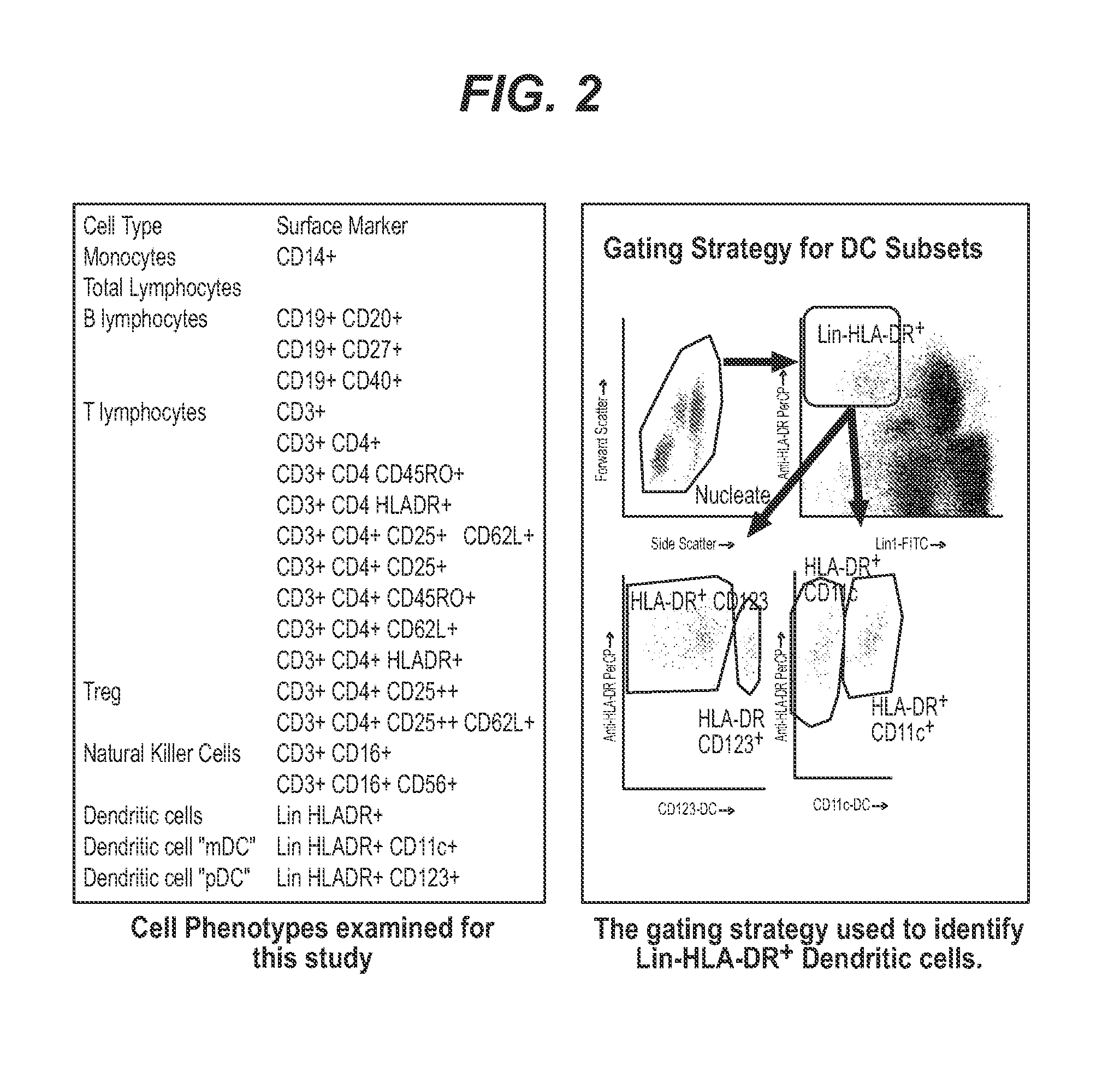Methods and reagents for detecting susceptibility to graft versus host disease or transplant related mortality
a technology of susceptibility and graft, which is applied in the field of methods and reagents for detecting susceptibility to graft versus host disease or transplant related mortality, can solve the problems of limited treatment options, and achieve the effect of rapid measurement and statistical robustness
- Summary
- Abstract
- Description
- Claims
- Application Information
AI Technical Summary
Benefits of technology
Problems solved by technology
Method used
Image
Examples
example 1
I. Biomarker Candidate 1: Peripheral Blood Dendritic Cell Subsets: (Disease-Predictive Biomarker, Mechanism of Action (MOA) Biomarker, Biomarker of Treatment Efficacy)
[0067]Flow cytometric analysis of sub-study samples from a GvHD prevention trial showed a statistically significant difference in the proportion of both CD11c+ and CD11c− dendritic cells (lin- / HLADR+ mononuclear cells, expressed as a fraction of mononuclear cells) in the peripheral blood of patients who suffered GvHD of grade two, three, or four compared to patients who developed no or only mild GvHD (“No GvHD,” grade zero or one). The results are shown in Tables 1 and 2. FIG. 1 outlines the trial and FIG. 2 shows cytometric phenotyping of PBMC.
TABLE 1% HLA-DR+ / CD11C+% HLA-DR+ / CD11C−BaselineGvHD23.7 ± 21.00P = 0.00173.1 ± 22.11P = 0.002No45.6 ± 11.8151.1 ± 12.20GvHDPost ECPGvHD34.5 ± 24.91P = 0.01163.2 ± 25.30P = 0.008No53.7 ± 11.6343.1 ± 10.51GvHD
[0068]We examined blood from a subset of 32 ECP-treated patients to iden...
example 2
II. Biomarker Candidates 2 and 3, Serum GGT and LDH (Biomarkers for Disease-Prediction, MOA, Treatment Efficacy)
[0075]Using the CD11c+ / CD11c− ratio, central laboratory data were examined for correlates of both the DC subset ratio and GvHD severity. Two new correlates emerged from the pre-transplant samples, elevated serum GGT and LDH. Elevation in these markers, along with significantly depressed platelet counts, allow the discrimination of individuals who later suffered high grade GvHD from those with grade zero and one GvHD in both the baseline and post-ECP samples.
[0076]Given its derivation from the CD11c ratio, these central laboratory markers meet all the criteria described for the flow cytometric marker, but have the added advantage of being readily measured and interpreted. GGT is widely used as a marker for liver damage in cirrhosis and other hepatic disorders, and LDH is typically considered a measure of cell lysis. Given that these markers are elevated in pre-transplant p...
example 3
[0079]Logistic regression analysis is used to identify high-risk patients (death from transplant and GVHD GRADE II-IV) given ECP, using baseline marker, laboratory and demographic variables to predict the outcome. Demographic information was collected for 62 subjects, 13 subjects had a transplant related death, and 22 subjects had grade III / IV Acute GVHD. Grade III / IV Acute GVHD was missing for one subject, this subject was not in the marker subset. The number of subjects with laboratory values varies due to missing data. The subset of patients with marker values collected has a total number of 23 patients, 9 subjects had a transplant related death and 15 subjects had grade III / IV Acute GVHD.
Marker Values n=32
[0080]The subset of patients with baseline marker values were analyzed to determine if any of the marker values contributed to the prediction of each of the outcomes (death from transplant and GVHD GRADE II-IV). The variables provided in Tables 3 and 4 are the better predictor...
PUM
| Property | Measurement | Unit |
|---|---|---|
| wavelength | aaaaa | aaaaa |
| cell surface markers | aaaaa | aaaaa |
| photosensitive | aaaaa | aaaaa |
Abstract
Description
Claims
Application Information
 Login to View More
Login to View More - R&D
- Intellectual Property
- Life Sciences
- Materials
- Tech Scout
- Unparalleled Data Quality
- Higher Quality Content
- 60% Fewer Hallucinations
Browse by: Latest US Patents, China's latest patents, Technical Efficacy Thesaurus, Application Domain, Technology Topic, Popular Technical Reports.
© 2025 PatSnap. All rights reserved.Legal|Privacy policy|Modern Slavery Act Transparency Statement|Sitemap|About US| Contact US: help@patsnap.com



